10 Reasons why New Caledonia is the best diving destination in the South Pacific.
Super dive spots depend on what the diver is looking for.
Some divers love drop-offs, some love pass diving, photographers want colorful coral reefs, wreck divers want wrecks, adrenaline junkies want shoals of sharks.
But no matter what you are looking for, here are 10 very good reasons why New Caledonia offers some of the finest dives in the South Pacific.
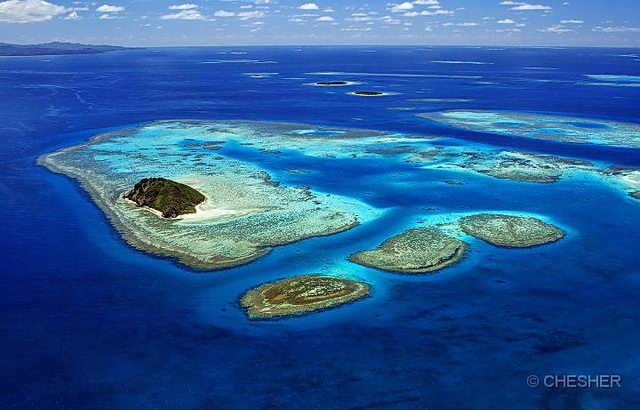
1. World's Largest Variety of Dive Sites
New Caledonia's Lagoon offers 24,000 square kilometers of reefs and islands and an 1,600 km long barrier reef. It's the world's largest coral reef lagoon and a UNESCO World Heritage Site. You'll enjoy an enormous variety of dive opportunities; deep water drop-offs, rip snorting reef passes, luxuriant coral reefs, white sand beaches, isolated lagoon islands, hundreds of wrecks (some easily accessible), manta rays, sharks, sea turtles, dugongs, and swarms of fish and invertebrates protected by an extensive array of marine reserves.
Many other south Pacific islands rise straight up out of the deep and have a comparatively limited coral reefs that are often over-fished by the villagers.
2. Accessible Dive Locations
Some of the best dive spots are within an hour of Noumea and the complexity of the lagoon and barrier reefs means you can find a place to anchor and dive in most weather conditions.
The dive spot in this image is 30 minutes by boat from Noumea. Our cruising guide will show you where the best dive spots are and recommended cruising routes and anchorages.
See this image in VR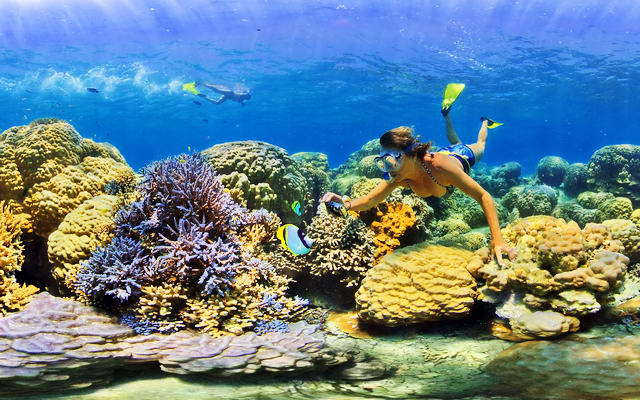
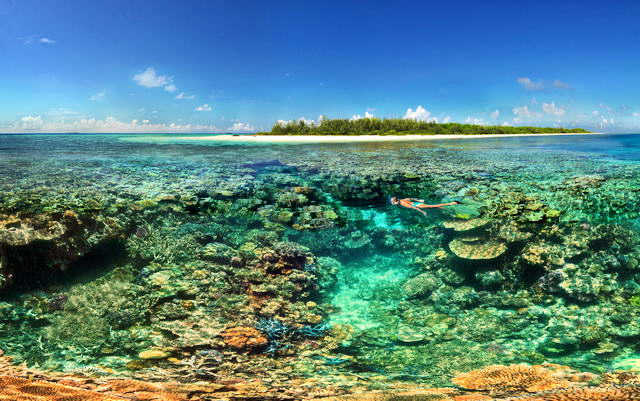
3. Free access to fantastic dive sites
There are vast areas of New Caledonia where you don't need to ask anyone's permission to go diving and nobody is going to bother you at all. You might not even see another boat the whole time you are there.
However, there are marine reserves where nobody can go without special permission and some rural Melanesian areas of New Caledonia still maintain they have exclusive access and use of the marine environment. In the Isle of Pines, Lifou, Ouvea, Belep and parts of the Northern Province you are expected to go with a guide (the local dive company). Our Cruising Guides will warn you if you need permission or must stay away from restricted areas.
4. Know the Best Dive Spots before you go
Just as on land, underwater places of exceptional beauty are rare; it takes a lot of swimming (and time) to find the best beauty-spots. The active and enthusiastic diving community in New Caledonia has explored and mapped the reefs, wrecks, and scenic locations so you'll be sure to visit the very best sites.
Our cruising and travel guides give you contact details for all the dive operators who can take you to the very best dive sites plus dive conditions, dive spots, marine reserves and regulations. Our guides have high resolution aerial photography of the reefs so you'll have a good idea of the best spots to go diving based on where the best coral development is. With our guides you can judge for yourself which destination offers you the best options.
See this image in VR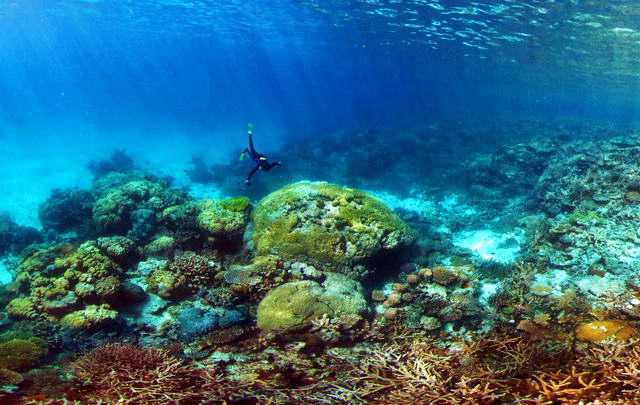

5. Protected - See reefs as they were last century.
Throughout the world coral reefs are failing; unable to survive the constant fishing pressure, pollution, and physical destruction caused by local populations and the slow death caused by ocean acidity and climate change.
New Caledonia has an extensive network of 34 marine and island reserves that has been in place for decades - and the reefs in those areas are thriving, with an abundance and variety of marine life that must be very close to what a pristine coral reef looked like a century ago. Fish in the marine reserves are abundant and tame, offering perfect opportunities for underwater photographers. The entire lagoon is a World Heritage Site. You might even enjoy the astonishing Mermaid Art .
Our cruising guide will show you the exact location of every nature reserve. There is a special section on park regulations that you need to know and respect.
See this image in VR6. Dive Centers and Supplies in New Caledonia.
Noumea has top notch dive shops with anything you might need, from rental tanks, quick air fills, replacement masks and fins, regulator repairs - everything.
There are 18 New Caledonia dive centers; 8 in Noumea, 2 in the Isle of Pines, 1 in Lifou, 3 on the east coast of Grande Terre and 4 on the west coast of Grande Terre.
Noumea also has a full range of photographic supplies, excellent restaurants, and a wealth of entertainment activities.
See this image in VR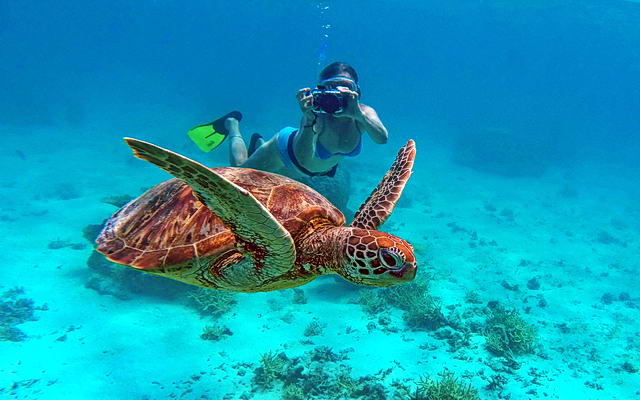
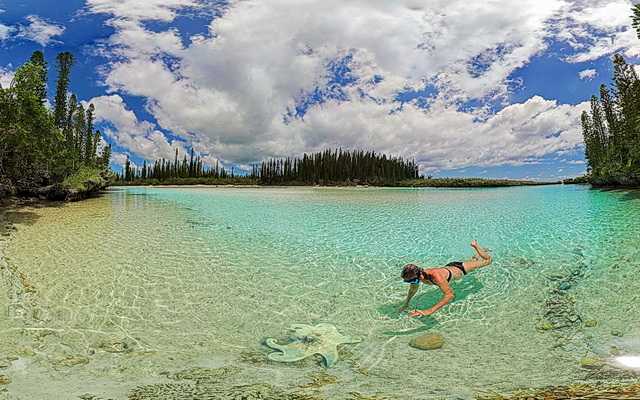
7. Springtime all year round
Extending from the tropics at 18 degrees South to the Temperate zone at Latitude 23 degrees south, New Caledonia enjoys one of the nicest climates on our planet. There is normally a brisk trade wind for sailing and, from December to May, the chance of a tropical cyclone. But all in all, New Caledonia's weather is a delight, made even more perfect by the luminous colours of the lagoon and the islands in the sunshine.
See this image in VR7. Safety First
New Caledonia has excellent medical facilities, a decompression chamber on 24X7 standby, helicopter and boat rescue services, all staffed with true professionals.
If you need help, you can get it in New Caledonia.
In Vanuatu, the Solomons, PNG and most of Fiji if you get injured while diving you are in really big trouble.
Our guides provide the contact details for emergency services. Plus there is a special section on dangerous marine animals, emergency treatment, and (important) how to avoid getting hurt in the fist place.
See this image in VR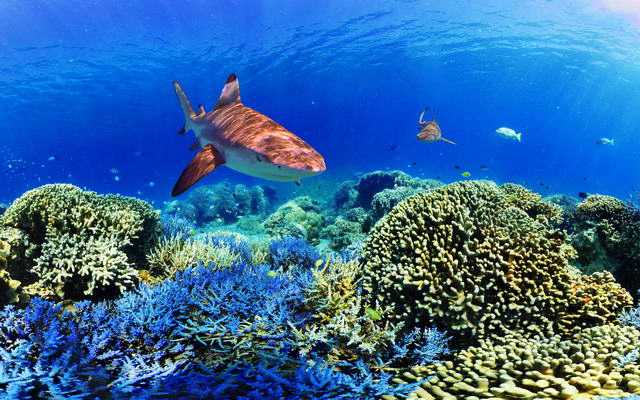

9. Fabulous Beaches.
You'll find wonderful white sand beaches near the best dive sits so you can get some sun and fun after your dive. On many Lagoon Islands you can snorkel over a beautiful coral reef to the most pristine beaches you'll ever see.
See this image in VR10. Sheltered Dive Spots
There are many dive sites that you can visit even when the weather is not suitable for diving out in the lagoon or the outer reef. These are interesting, unusual, and often stunningly beautiful like this reef at Anse Majic in the Baie du Prony. Travel Guide to New Caledonia
See this image in VR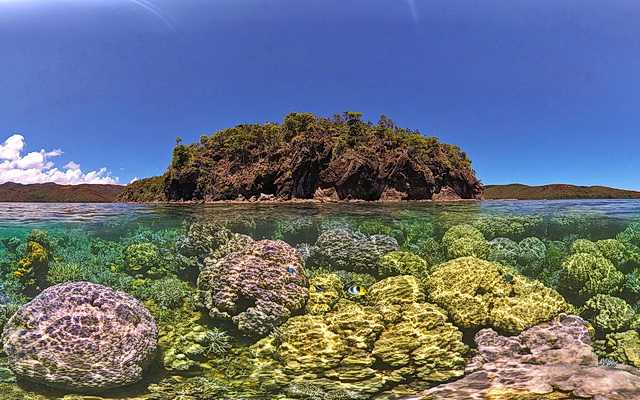
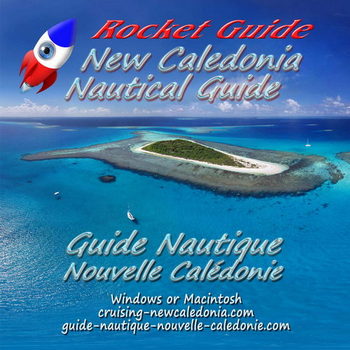
Plus One Extra Special Reason
The comprehensive and accurate, easy to use, interactive Rocket Cruising Guide to New Caledonia. There are no other destinations in the world with cruising and tourism guides like the Rocket Guides to New Caledonia and Vanuatu. Plan your diving expedition in advance and have more action when you arrive.